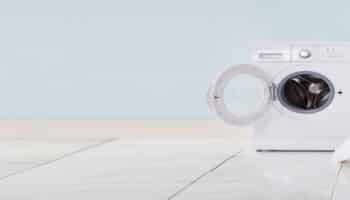We've independently reviewed this article to make sure it's as accurate as we can make it.
To find out more about our article creation and review process, check out our editorial guidelines.
Is your washer not cleaning well?
You’re not alone! Opening your washing machine only to find that your clothes are still dirty can be quite frustrating.
Don’t worry, though. You’ve come to the right place to fix the issue.
If your washer doesn’t clean well, avoid overloading it, read the detergent’s label, deep clean the machine, and select the right cycle. If the issue persists, please check the dispenser drawers, agitator, and water valve.
Read on to learn how to get your washer cleaning better!
Fixing a Washer That Doesn’t Clean Well: 7 Steps
In this section, I’ll guide you through the different reasons that can explain why your washer is not cleaning your clothes well and provide some helpful tips to restore its cleaning performance.
Are you ready? Let’s dive in!
#1 Avoid Overloading Your Washer
My usual advice when fixing a washer that doesn’t clean well is to check the size of the laundry load.
You see, clothes must move around freely during the washing cycle. Otherwise, the agitator or drum won’t effectively remove dirt and stains, and the detergent won’t be able to dissolve.
Aim to fill your washer’s drum to 75% of its capacity for the best cleaning results. Don’t forget to read the manufacturer’s manual to learn more about the recommended load capacity for your specific model.
It’s also important to sort your laundry. Try separating heavy items, like blankets and towels, from lightweight items, such as delicate fabrics, to ensure a balanced load, prevent tangling issues, and keep your clothes from damage.
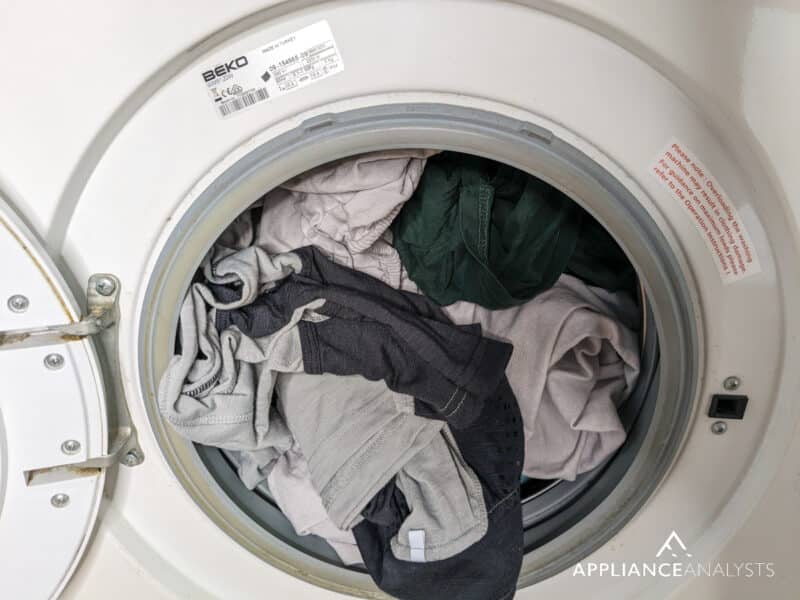
#2 Read Your Detergent’s Label
If your washer is not cleaning well, checking your detergent’s label is important.
Using the right detergent the right way is key to ensuring the best cleaning results.
Now, here’s a common mistake: Using too little detergent won’t get rid of stains, and using too much can lead to residue buildup. You’ll determine the perfect amount for different load sizes by reading the product’s label.
From what I’ve seen, some detergents are specifically formulated for use in either hot or cold water. So, please make sure you select the recommended water temperature for your wash cycle.
Don’t forget to consider your machine type. High-efficiency washers are designed to use less water than traditional models. So, if you own an HE washer, you must use an HE detergent to prevent problems like excessive suds and residue buildup.
Note: Identifying an HE detergent is simple; just look for the “HE” symbol on the packaging.
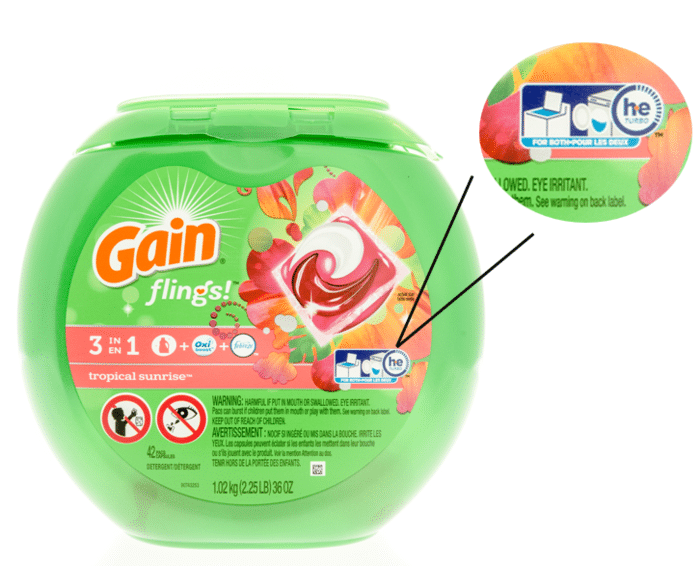
Don’t forget to check the expiry date on your detergent’s packaging. If it has expired, it won’t clean your clothes effectively.
If you notice oil-like stains on your clothes, consider diluting your fabric softener and using the recommended amount. You can also run a clean cycle and try washing your clothes without fabric softener.
#3 Deep Clean Your Washing Machine
I often find that when a washer doesn’t clean well, it’s usually because the machine itself is dirty.
Over time, dirt and detergent residue can build up in the washer’s drum, agitator, or other components. As a result, all the debris goes onto your clothes during the washing cycle, leaving them dirty.
It’s crucial to deep clean your washer every three to six months to ensure the best cleaning results. Keep in mind that if you live in an area with hard water, you’ll probably need to clean your machine more often.
Note: If you have hard water, try using a water softener and detergent specifically designed to address mineral buildup.
Here’s how to deep clean your washer.
- Set the hottest setting, longest cycle, and largest load. If your washer has a Clean cycle, please select it.
- Add 2-3 cups of vinegar and let the washer start.
- Stop the cycle and add 1/2 cup of baking soda. Wait for 30 minutes to allow the detergent residue and grime to break down.
- Clean the filter, drawers, and gasket with equal parts of warm water and vinegar.
- Leave the door open and allow your washer to dry. Use paper towels or a dry, clean cloth to speed up the process.
You can also use a washing machine cleaner and run multiple Clean cycles. Remember, if your washer doesn’t support a Clean cycle, you can choose the longest and hottest setting.
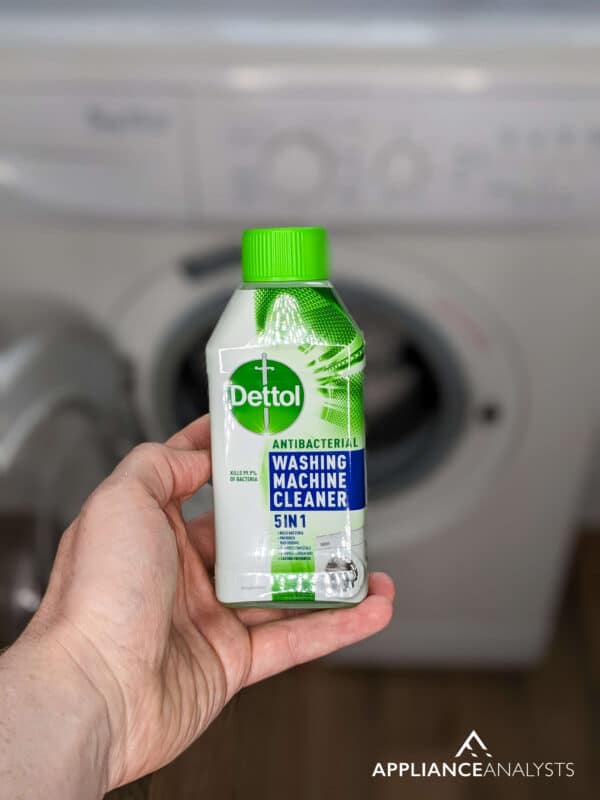
#4 Select the Right Cycle
My go-to tip for getting a washer to clean better is to select the right cycle.
Different cycles are designed for different types of fabrics and levels of soil. For example, if you choose a Delicate cycle for heavily soiled items, your clothes will not get cleaned effectively.
For heavily stained clothes, try using a Heavy-Duty, Deep-Fill, or similar cycle. I also recommend using hot water when possible.
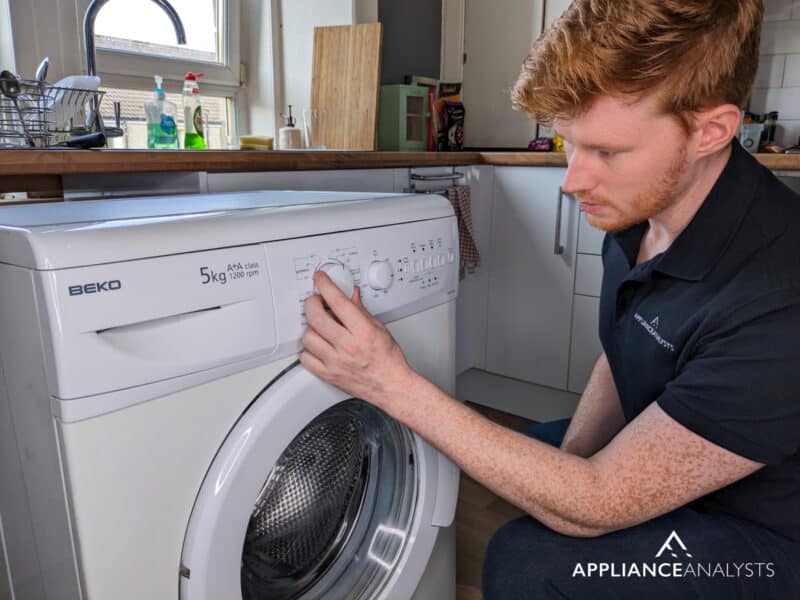
You see, heat causes molecules to move more quickly, weakening and separating the bonds between them. As a result, hot water can reach further into the fabric and loosen the dirt from the fibers.
Tip: Just keep in mind that hot water is not suitable for delicate fabrics or dyed clothes. To figure out what cycle and temperature to select on your washing machine, read the care labels on your clothes.
#5 Check the Dispenser Drawers
If you’ve tried the fixes above, but your washer is still not cleaning well, please examine the drawers to make sure that the detergent is actually being dispensed.
Unfortunately, dispenser drawers can easily get clogged due to detergent and fabric softener buildup. In such cases, you’ll need to clean them thoroughly. Here’s how to do it:
- Remove your washing machine’s drawers. In some models, you can push a release button to do so. Please read your manual for detailed instructions.
- Mix warm water and vinegar to clean the drawer. You can use a toothbrush to reach the corners.
- Rinse the drawers under warm water and let them dry. To speed up the process, use a paper towel or dry cloth.
- Once the dispenser drawers are clean and dry, please reassemble them.
If you can’t remove the dispenser drawers, just pull them out as far as they’ll go. Then, use hot water and a toothbrush to clean them.
#6 Examine the Agitator
If your top-load washer is still not getting your clothes clean, it’s time to examine the agitator.
The agitator is located in the center of your washer’s drum and is responsible for moving your clothes back and forth to loosen dirt and soil particles.
Unfortunately, if the agitator is loose or damaged, it won’t be able to move your clothes and get them clean.
Tip: To determine if your washer’s agitator is causing the cleaning issue, please pay special attention to any unusual noises. If you hear a grinding, banging, or rattling sound, the teeth on your agitator are likely stripped out.
Unplug your washer and remove the agitator to inspect it. Look for worn or damaged parts and get a replacement if necessary.
If you want to get any replacement part – or see how much one would cost – click to enter your model number in the search bar below. Our partners at AppliancePartsPros stock almost every part with free guides on how to install them.

#7 Check the Water Valve
If none of the tips above have helped you get your washer to clean better, you must inspect the water valve.
The water valve is one of the most important components in your washing machine, as it controls the flow of water. If it’s malfunctioning, it won’t allow enough water to flow. As a result, it can affect how well your detergent is dispensed into the wash.
A faulty water valve can also lead to the detergent not being dispensed at the correct time, reducing its effectiveness.
To solve the problem, unplug your washing machine from the power outlet or turn it off at the circuit breaker. Then, access the water valve and disconnect the hoses. I recommend placing some towels to catch the water spills.
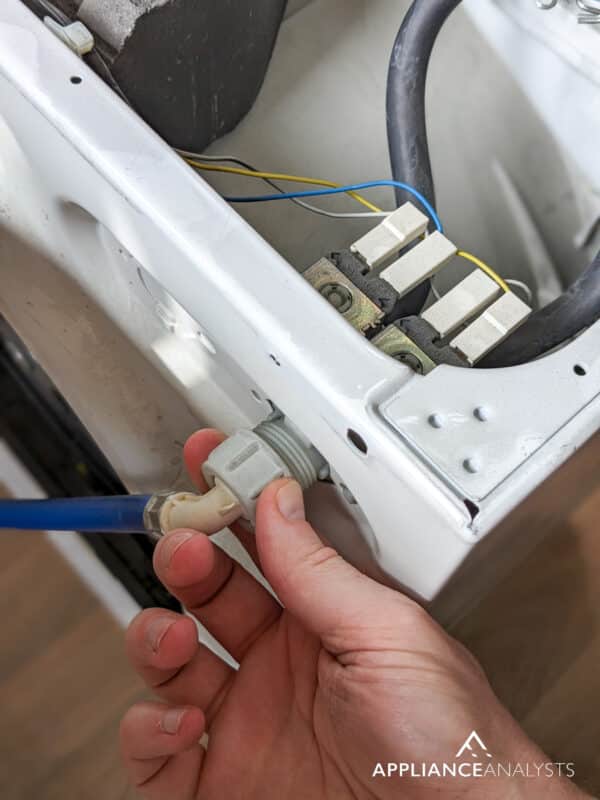
Replace the water valve with a new, compatible one and secure the panel back in place.
Keep in mind that if you don’t feel comfortable replacing the water valve yourself, it’s best to check your warranty status and call a professional. They’ll be able to accurately diagnose and fix the problem.
Wrapping Up: Steps to Boost Your Washer’s Cleaning Performance
Hopefully, now you know how to fix a washer that doesn’t clean well.
Remember, to get your washer to clean better, avoid overloading the drum, read the detergent and fabric softener’s label, deep clean the unit, and select the right cycle and temperature. Don’t forget to inspect the dispenser drawers, agitator, and water valve to fix the issue.
Thank you so much for taking the time to read this article. If you ever experience a different issue with your washing machine, please check out our site. We love fixing all sorts of appliances.
Have a wonderful rest of the day!







